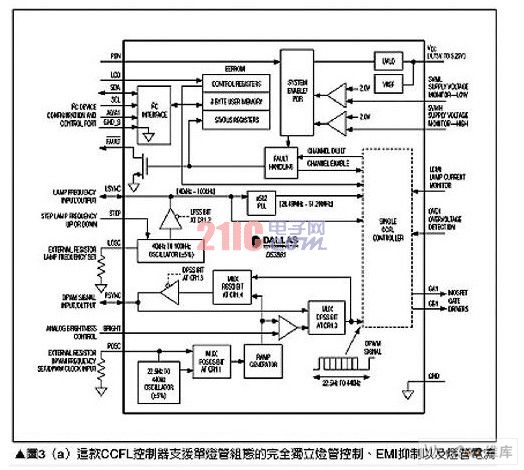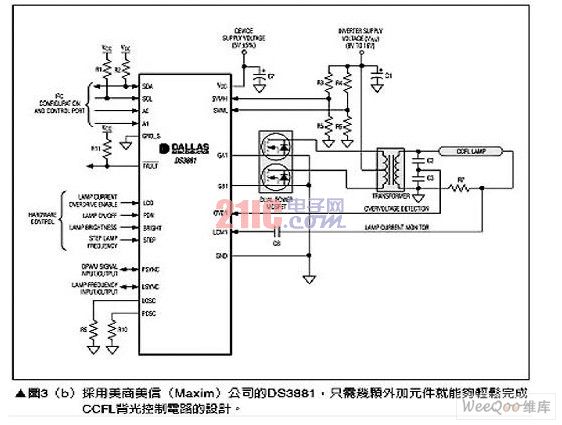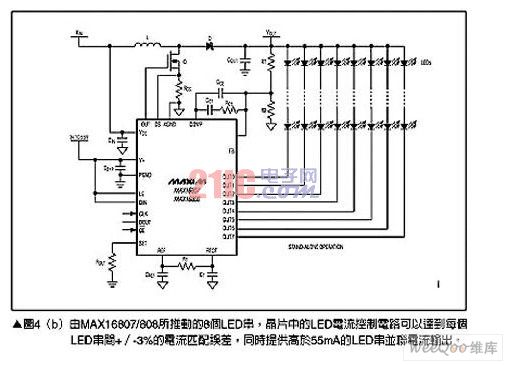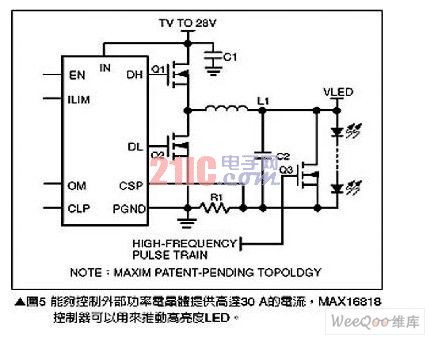In the historical process of automobile development, lighting has always played a very important role. At first, the car was only equipped with headlights that were easy to find roads in the dark. Soon, in the case of increasing traffic flow, it was safe and orderly. It is considered that other lighting sources, such as taillights, indicator lights and other signal lights, are added one after another, and warning lights and fog lights are added for some special cases. On the other hand, light sources installed in the cabin, such as instrument panel lights, roof lights, Map lights or door pedal lights also provide greater convenience for drivers and passengers.
This article refers to the address: http://
In addition to the earliest models, all of these lights use power and use incandescent bulbs. In recent years, other light sources, such as Light Emitting Diodes (LEDs) and Cold Cathode Fluorescent Lamps (CCFLs), have been gradually applied. In automobiles, the main advantages of these new light sources are longer life and better luminous efficiency. The standard life of incandescent bulbs is about 10,000 hours, fluorescent tubes can reach 50,000 hours, and LEDs can even reach 100,000. hour.
Long LED life and low failure rate can significantly reduce maintenance costs. Other advantages of LEDs include low voltage operation, low electromagnetic emissions, no mechanical stress, thinner size, wide operating temperature range and greater amplitude. The brightness adjustment range, through the improvement of LED technology, can be expected to gradually replace other light sources, but currently CCFL has considerable advantages in some specific applications, such as large-area backlight and high-power non-focus lighting.
Both CCFL and LED light source require a power supply, and different technologies have their own special requirements. In addition, these power supplies must also perform additional functions for other specific applications. This article will introduce the power solutions for LED and CCFL light sources, and discuss various vehicles. Design for interior and exterior lighting applications.

Let the bright place have light: car room lighting
Cabin lighting applications include dashboards and indicator backlights, roof or map lights, door pedal lights or rear door lights, and display backlights. Due to other special requirements for display backlights, we will discuss them later.
All of these automotive interior lighting applications can use LEDs as a light source. Although map lights and roof lights can usually be solved with a high-brightness LED, instrument panel lights and door pedal lights typically require more than one LED to be connected in series. The reason why the series connection is adopted is mainly to avoid the color difference caused by the difference in current between different LEDs. All applications must have a fixed current supply with built-in shading adjustment. An example of a combination of these features is Maxim's MAX16800, which integrates all control and current supply circuits. Figure 1 (a).
With an input voltage range of up to 40V, the MAX16800 can be directly connected to a car battery without the need for a protective component. These protections are primarily used to avoid spikes in the battery circuit due to load dumps. The current output and current can be set by the sense resistor RSENSE connected in series with the LED, see Figure 1(b). To improve current set accuracy and increase resistance to external noise, the MAX16800 uses a differential current sense input.
The color temperature of the LED will change with the current flowing through it. Therefore, it is better to use the method of constant current pulse width modulation (Pulse Width Modulation (PWM)) instead of directly changing the actual current. The MAX16800 passes through the chip. The Enable input pin and PWM signal are used to control the brightness of the LED. The current flowing through the LED will be controlled by the speed set by the PWM.
Anti-EMI electromagnetic interference capability is very important in automotive applications. Similarly, care must be taken not to generate any EMI. Switching through the LED current for switching is the source of EMI radiation. Therefore, in order to reduce the EMI emitted during PWM operation, The MAX16800 incorporates a waveform shaping circuit to smooth the switching edges.
Many lighting applications do not include a microcontroller that can be used to generate light and dark control signals. For this type of application, the MAX16805 and MAX16806 can be used. Please refer to Figures 2(a), (b) and (c). These LED drivers are included. All the required functions, such as ramp generator, pulse detector, voltage regulator circuit, bandgap reference circuit and many more, can save the need of microcontroller or switching converter, please refer to Figure 2 (a ). Both chips are capable of controlling the internal PWM signal generated by an external analog voltage applied to the DIM input. The MAX16806 also provides a switch input SW (SwitchInput) that can mask the analog shading control settings. This switch input can not only detect The state of the switch has both a bounce function and a wetting current for a stable switch.


In some lighting applications, we must closely monitor the temperature of the LED, which is especially important in places where space is limited and heat dissipation is poor. LED overheating will shorten its life, thus affecting a major advantage of using this light source, fortunately This overheating condition can be avoided by temporarily reducing the brightness of the LED in most applications. To achieve this function, the MAX16806 provides an external temperature sensor input. Please refer to Figure 2(c) when the temperature is too high. When the situation occurs, the component will dim the brightness until the temperature returns to an acceptable range. The temperature and brightness control threshold can be controlled through the serial interface and stored in the EEPROM memory. This feature allows us to avoid expensive and Large heat sink.
The MAX16805∕806's internal reference circuit is used in the feedback loop to monitor the LED current and can be adjusted through the serial interface, which allows all LED strings to share a fixed sense resistor, simplifying production and reducing cost.
Enhanced display backlight
At present, more and more LCDs are used in instrument assemblies, car computers, radios, navigation systems, and entertainment systems to display information. Unlike the above examples, backlights mainly distribute light over a large area. Instead of producing a focused beam.
Traditionally, LCD panels use CCFL lamps as backlights, mainly because of the advantages of good efficiency, low temperature and high illumination capability. Although CCFL controllers are quite successful in non-automotive applications such as LCD TVs or LCDs, However, the working environment of the car brings special challenges and requirements to this technology. In order to reduce the number of components, CCFL controllers must include such as EMI suppression, overdrive capability of the lamp current, and the number of pins. To the lowest serial control interface, lamp channel failure monitoring for each channel, precise built-in oscillator circuit for lamp frequency and DPWM control, and other functions, such solutions are Maxim's DS3881, please refer to Figure 3 ( a), it can combine the complete CCFL power control subsystem with only a few additional circuits, please refer to Figure 3(b). The DS3881 is optimized for automotive applications. Due to the basic circuit configuration used, external transistors, transformers, and lamps themselves form a source of EMI noise. The DS3881 uses spread spectrum and frequency offset techniques to reduce EMI emissions and any unremoved noise is moved to non-critical bands to solve this problem.


Another unique requirement for automotive applications is the ability to operate at low temperatures. The DS3881 has a special lamp current overdrive mode that allows for rapid heating of the lamp at low temperatures, providing almost immediate activation. This product also has a large number of Error monitoring functions such as lamp failure, lamp open, overcurrent, activation failure, and overvoltage.
Another unique requirement for automotive applications is the ability to operate at low temperatures. The DS3881 has a special lamp current overdrive mode that allows for rapid heating of the lamp at low temperatures, providing almost immediate activation. This product also has a large number of Error monitoring functions such as lamp failure, lamp open, overcurrent, activation failure, and overvoltage.
Thanks to its highly integrated nature, the DS3881 can be used with a relatively small number of external components, thus reducing material costs and simplifying the production process. For large display applications requiring more than one lamp, multiple DS3881 controllers can be directly used. In series, all functions can be controlled via the circuit connection or serial interface, while the set values ​​can be stored in the built-in non-volatile memory.
For smaller display panels, LED matrices can be used instead of CCFL backlights, but using multiple LED strings can also pose relative design challenges, the most obvious of which is how to provide consistent illumination and color output across the entire area. One way to push the LED backlight matrix is ​​to use the MAX16807 and MAX16808 with 8 LED drive channels, respectively, which can provide 55mA current output. Please refer to Figure 4(a). Figure 4(b) shows the typical circuit using MAX16807. Simplify the system and design the backlight driver subsystem with just a few components.


The MAX16807∕808 can be used in buck, boost, or SEPIC modes, depending on the input voltage range and the number of LEDs connected in series on each output, plus an external resistor and a Zener diode to keep the component unloaded The impact of the sudden drop. Although the current of all LED strings is controlled by only one resistor, the current of each LED string can be independently controlled. Such a structure can achieve a current matching error of less than ±3% between each LED string without any additional components.
Since each LED string can be independently controlled to adjust the mismatch between each other, the brightness and darkness of all LED strings can be controlled simultaneously by the Enable pin, which can reach 5000 by the 50Hz to 30kHz shading control frequency range. The brightness/dark ratio of 1 is so high that the display of the car that can be easily viewed in the dark and bright sunlight is quite important. The adjustable switching frequency range from 20kHz to 1MHz allows us to choose not to work with the system. Other parts, such as the frequency of radio receiver interference, in addition, the MAX16808 adds LED open error monitoring and other functions, these controllers can also push the larger LED matrix through the series.
External lighting needs
External lighting applications bring new problems such as safety and maintenance, so higher power lighting is required. External lighting, such as taillights, brake lights, and emergency warning lights or fog lights, must be able to operate normally to avoid serious problems. For safety reasons, the taillights must be visible from a distance and do not provide illumination for large areas, so the same LED and current specifications used in automotive interior lighting can also be used in these external lighting applications, which represents the discussion above. The MAX16800, 807, and 808 driver chips designed for internal lighting applications can also be used in these applications. Since the number of LEDs used in taillights is usually higher than that of built-in applications, multiple driver chips must be used, and multiple driver chips can be used. The same approach can be applied to the design of brake indicators or other signal lights, as a result of a single line failure that still guarantees fault-tolerant standby operation.
For applications that require high lighting power, such as lights or fog lamps, multiple high-brightness LEDs (HBLEDs) must be used, but high-brightness LEDs require ultra-high drive currents. To generate the required current, too much is used. The driver chip, so the simpler solution is to use a controller that can drive high-current transistors, providing up to 30A for high-brightness LEDs. An example of such a component is the MAX16818, see Figure 5.

The MAX16818 operates in buck, boost, and SEPIC modes, while the wide switching frequency range of up to 1.5MHz allows it to be used with small external components. External lighting applications typically require fast activation or immediate switching of brightness. To achieve this goal, the MAX16818 is a USS (Maxim)'s first LED driver product that can achieve 20A ∕ms fast current switching. If higher current or fault-tolerant standby capability is required, the MAX16818 has a 180° delay pulse output that can be used to control the second LED driver. .
All of the solutions presented above are suitable for automotive applications including short-circuit safety outputs, temperature thermal shutdowns, and -40°C to +125°C operation. These products are available in a small, thermally enhanced QFN or TSSOP package that can be easily placed in In space-constrained electronic modules for automotive lighting applications.
Drum type Rice Cooker
Features
This type rice cooker is famous with drum type appearance, which is easy operation and easy clean.
There are two type of inner pot , one type called white pot which is without non-stick but cheaper price .another one called non-stick pot is polished with emery, Also there are two type non-stick with different price ,it`s depending on different demands to use.
And the inner pot cannot be burned on the stove, which will make the pot transfigured and bad contact with the heating plate. While cooking , the heating plate or the fuse is most likely to be burned for the bad contact of the inner pot and the heating plate, Besides, make sure to dry the pot before putting into the outer shell of the rice cooker ,or else the drops of water flowing on the heating plate, will make the heating plate rusted.
Applications
Many peoples are used drum type rice cooker for congee and soup, some of peoples are prefer to use this type rice cooker for steaming.
Drum Rice Cooker,Drum Shape Rice Cooker,Electric Drum Rice Cooker,Multifunctional Drum Rice Cooker
Guangzhou Taipeng Electrical Appliances Technology CO., LTD. , http://www.kettles.pl